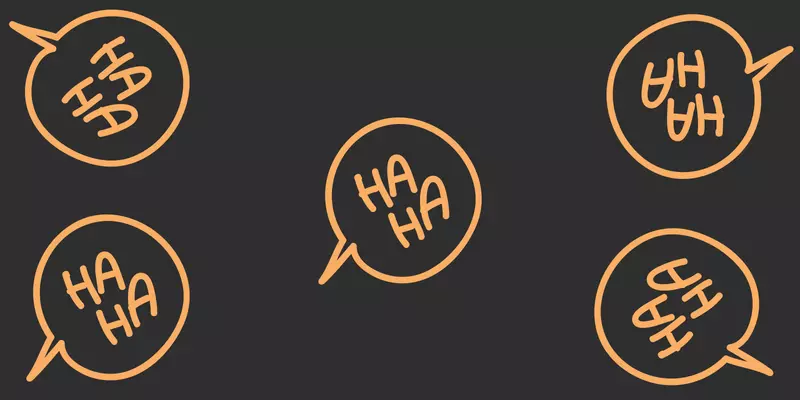
In this article you'll learn all the letters of the Spanish alphabet and how to pronunce them. In Spanish, the alphabet is called el abecedario or el alfabeto. It's vital for many everyday situations, such as when spelling your name or taking down someone's email address. It also will help to improve your pronunciation – as Spanish is generally pronounced exactly how it’s written, if you know how to say each letter of the alphabet correctly then you can say any word perfectly.
Watch the video
El alfabeto español
The official alphabet consists of 27 letters of which 22 are consonants and 5 are vowels. This is the same as English apart from the addition of ñ, which is equivalent to the ny sound in canyon and probably familiar to most due to the word piñata. The tilde (~) above the n was originally another smaller n which indicated that the word used to be spelt with a double n – España (Spain) was Espanna and dueña (landlady) was duenna which, incidentally, English adopted and still exists today.
The alphabet is listed below with each letter accompanied by its Spanish spelling in square brackets, how to pronounce the Spanish spelling in round brackets, phonetic letter (equivalent of Alpha, Bravo, Charlie, etc.), and pronunciation notes. The phonetic letters can come in very useful when spelling things over the phone. Barcelona and Valencia are the best examples as b and v sound exactly the same in Spanish, which can cause problems.
A [a] (ah) de Antonio: An ah sound, between the a in father and the a in mat. Be careful not to elongate it too much: while the sound is an ah, it’s shorter than in most English words. Examples: madre (mother), mañana (tomorrow), arándano (blueberry).
B [be] (beh) de Barcelona: Two distinct sounds. At the start of a word or after m/n it’s pronounced like the English b in boy. Otherwise it’s softer with the lips slightly apart. Examples: beber (to drink) and barbilampiño (clean-shaven/baby-faced), which contain both sounds.
C [ce] (theh/seh) de Cádiz: Before an e or i, it’s soft and pronounced like th in think (Spain) or s in sun (Latin America). In all other cases it’s hard, apart from the digraph ch, and is pronounced like the k in key. When a double c appears as in acción (action) or traducción (translation), the first c is hard and the second soft. Examples: caricia (stroke/caress), cerca (near), clave (key), ancla (anchor).
D [de] (deh) de Dinamarca: Like the English d in down at the beginning of a word or, after i or n. Otherwise in the middle/end of a word it’s like th in bathe. At the end of a word it’s often very softly voiced. Examples: dar (to give), andar (to walk), aldea (small village), voluntad (will/choice).
E [e] (eh) de España: Different from the English e; very important to remember this. Like eh as in ‘Eh, what was that?’. Always short and never long like the double e sound in need. Examples: ejercer (practice a profession), enojarse (to get angry), me emborraché (I got drunk).
F [efe] (ef-eh) de Francia: Same as in English. Also substitutes the English ph in photo. Examples: fanfarroneada (boast), efímero (fleeting), foto (photo)
G [ge] (heh) de Guatemala: When followed by an e or i, like a harsh English h or the ch in the Scottish loch. Almost the same as the letter j only slightly less breathy. In all other cases, including the digraph >gu, pronounced like the g in game or goose. Examples: Gijón (northen coastal town), ángell (angel), ganado (livestock), gozar (enjoy).
H [hache] (ah-che) de Huelva: Silent. Never pronounced. Imagine it’s not even there. The only exception is in some foreign place names such as Hawái and the digraph ch. Examples: hechizo (spell), anhelo (yearning), herencia (inheritance).
I [i] (ee) de Italia: Like ee in see or i in machine although a little shorter. Never pronounce it like the English i in if. Examples: inhabilitar (disqualify), idóneo (ideal), inicial (initial).
J [jota] (hotah) de José: As mentioned earlier, like the soft g, a harsh English h or the ch in the Scottish loch. Slightly breathier with more vibration in the throat. Examples: jilguero (goldfinch), jorobar (to annoy), enjuagar (to rinse).
K [ka] (kah) de kilo: Not often used but the same as the English k. Examples: keniano (Kenyan), bikini (bikini), kilómetro (kilometre).
L [ele] (el-eh) de Lérida: Like the English i but with the tongue closer to the roof of the mouth. Examples: Lujuria (lust), lilailas (tricks), lealtad (loyalty).
M [eme] (em-eh) de Madrid: Same as the English m. Examples: mamífero (mammal), amante (lover), momificar (mummify).
N [ene] (en-eh) de Navarra: Same as the English n. Examples: ningún (no/not a single), nada (nada), tienen (they have).
Ñ [eñe] (en-yeh) de ñu: As mentioned above, like the ny in canyon or the ni in onion. Examples: añoranza (longing), teñir (to dye), ñoño (boring/crybaby).
O [o] (oh) de Oviedo: Like o in the word no or so but shorter. Examples: otorgar (to award), angosto (narrow), otorrinolaringologo (ENT specialist).
P [pe] (peh) de Portugal: Same as the English p. Examples: papiro (papyrus), papal (papal), ripio (rubble).
Q [cu] (coo) de queso: Always followed by a u to form the digraph qu.
R [erre] (air-eh) de Roma: Like a softer version of the d in caddy. Touch the tip of your tongue just behind your front teeth when you say it. At the start of a word it is sounds like the trilled digraph rr. Some speakers also pronounce it this way at the end of an infinitive such as hablar but this isn’t necessary. Examples: pero (but), amparar (to protect), faro (lighthouse), regar (to water).
S [ese] (es-eh) de Sevilla: The same as the English s. Examples: sesgado (biased), sesión (session), sistemas (systems).
T [te] (teh) de Tarragona: The same as the English t although softer and without an accompanied exhalation of breath. Examples: tartamudo (stutterer), tita (nan, grandma), tantear (feel about for/ask around).
U [u] (oo) de único: Like the oo in food or the u in lunar. When preceded by a g forms the digraph gu. Examples: cúrcuma (tumeric), usuario (user), unir (to join).
V [ve] (oo-veh) de Valencia: Exactly the same as b, there is absolutely no difference. Hence vaso and baso sound identical, accounting for why even many natives often misspell words with v and b. You just have to learn the spelling unfortunately. Example: selva (jungle), voy (I go), víveres (supplies).
W [ve doble] (oo-veh doh-bleh) de Washington: Not a native Spanish letter. Only used in loanwords and as such the pronunciation varies. For German loanwords such as Wagner it’s like the English v, otherwise generally the English w will get you by. Examples: wakeboard (wakeboard), waterpolista (waterpolo player), wolframio (wolfram/tungsten).
X [equis] (eh-keys) de xilófono:b In most cases the same the English ks in socks. Examples: extraño (strange), tórax (thorax), explicar (to explain). In some place names, the most well known being Mexico and Texas, it’s pronounced like a j – Méjico, Tejas. In others, like Xochimilco, it’s pronounced as an s.
Y [I griega] (ee gree-eggah) de yegua: Normally like the English y in yes. At the end of a word it changes to y in say or the English i. One exception is the word ‘and’, which is just the letter y and pronounced like the Spanish i, an ee sound. Examples: ayuntamiento (local government), yuyal(scrubland), hay (there is/there are).
Z [zeta] (theh-tah/seh-tah) de Zaragoza: Exactly the same as c except that it’s always soft and never hard like the k in key. In Spain it’s like the th in think and in Latin America like the s in sun. Examples: zanahoria (carrot), hizo (he did/made), zozobrar (to sink/to fail).
Wrapping up
Watch the video and spend some time reciting each letter sound using the list above as a reference. Make sure to keep the vowels short and remember that they’re never silent while the h is always silent. Also remember that if you want to refer to a letter, or letters, of the Spanish alphabet then they're always feminine – la letra/las letras.
Now you know your ABCs and can perfectly pronounce any letter of the Spanish alphabet like a native. That's all for this article. Happy native Spanish speaking :)

Get the book
If you liked this article check out our new book, How to Speak Spanish like a Native, which is due to be published very soon. It's your complete guide to mastering the Spanish language and speaking like a native. Everything in the blog and more!
Discover more!



